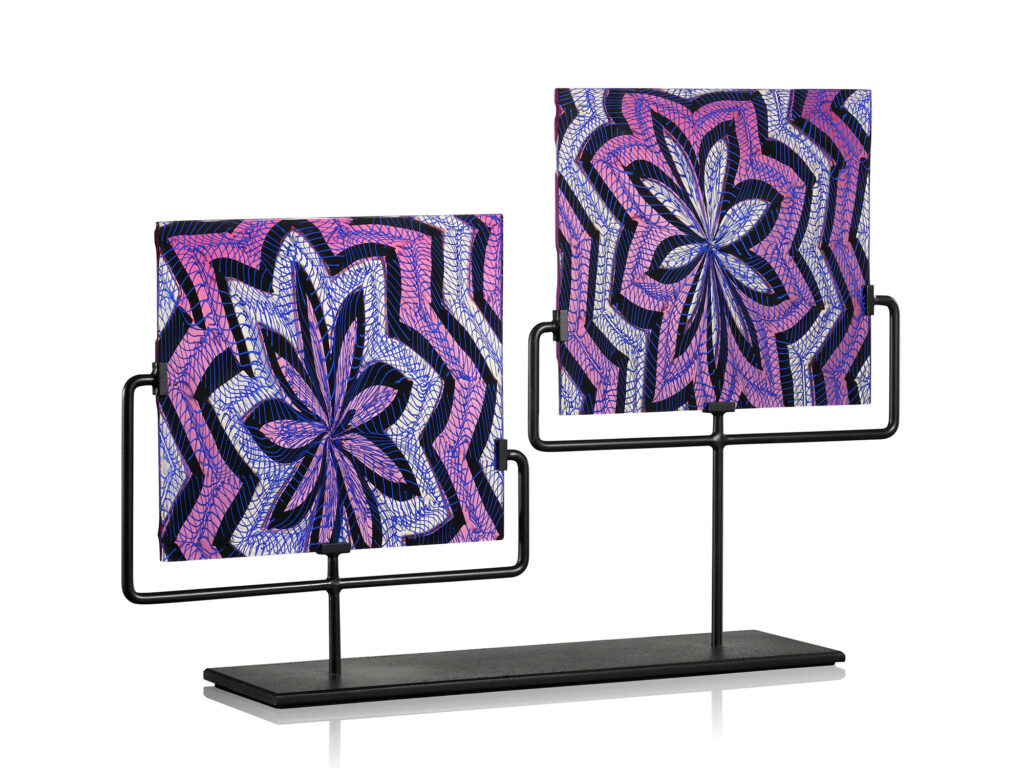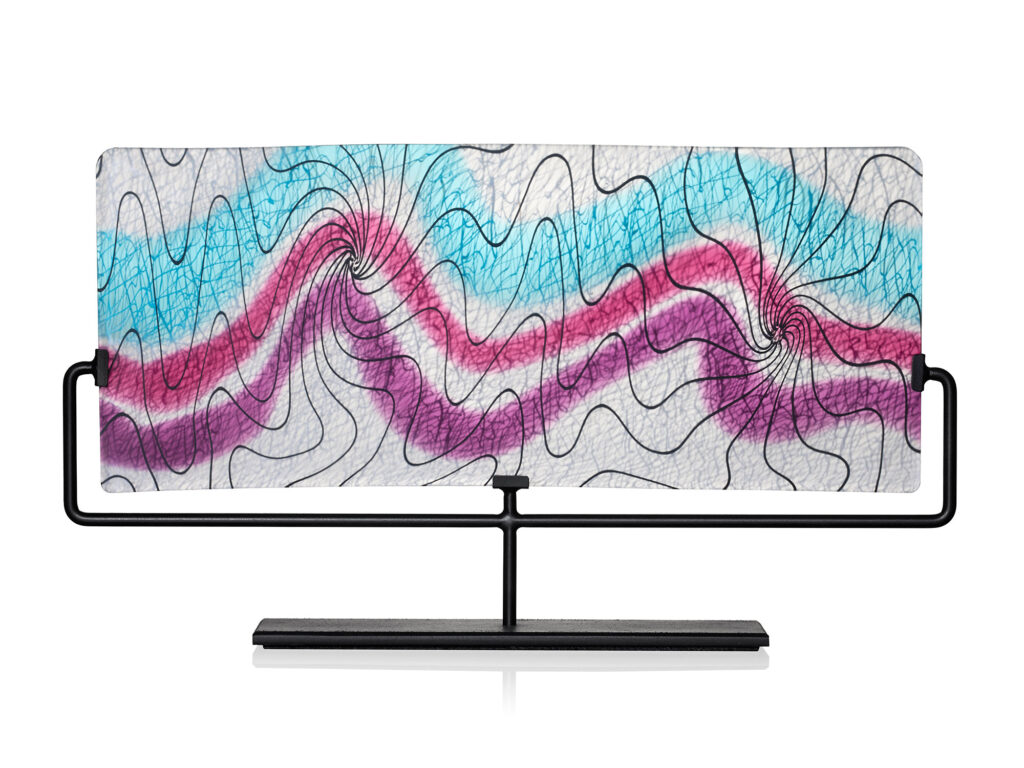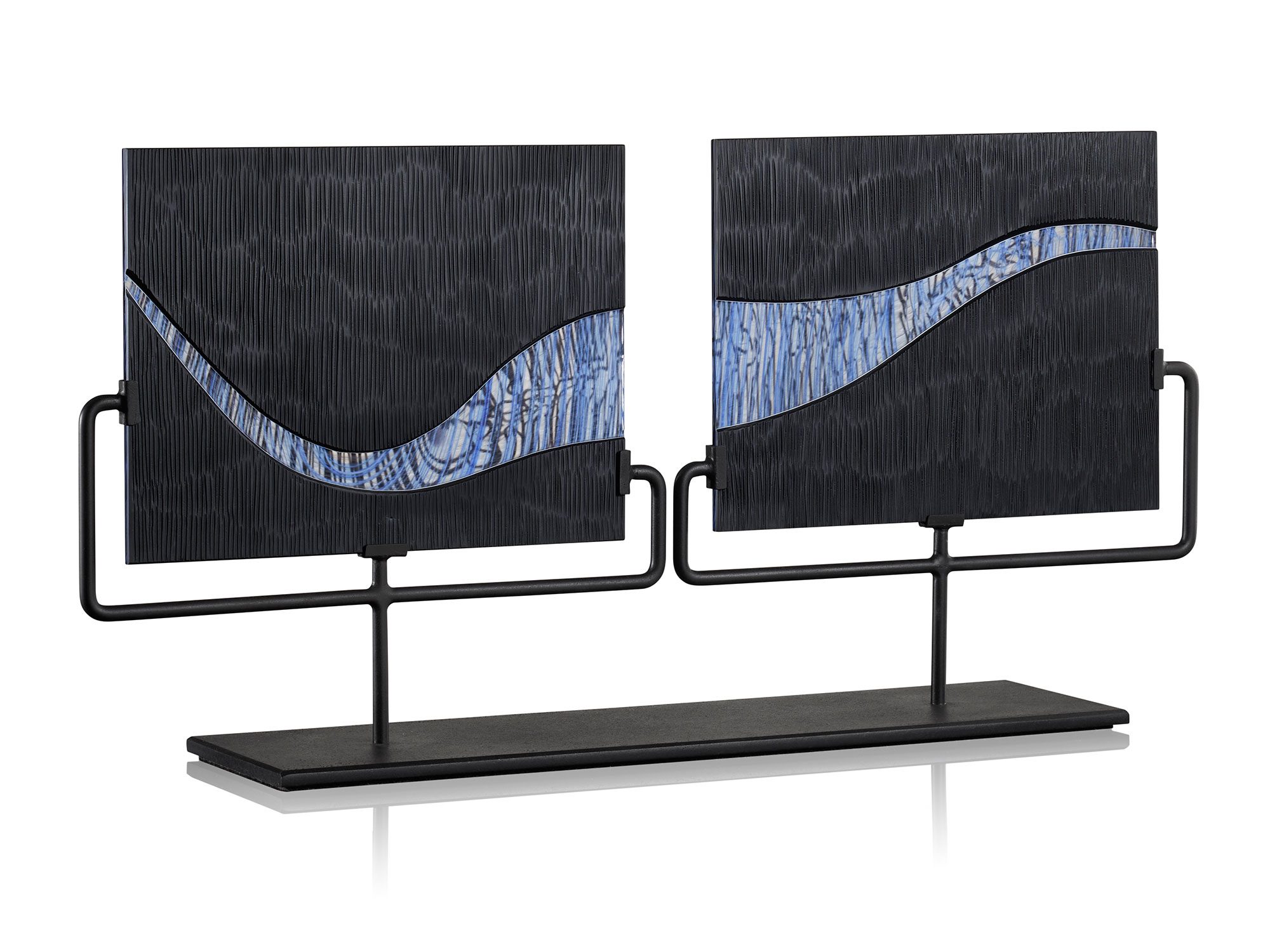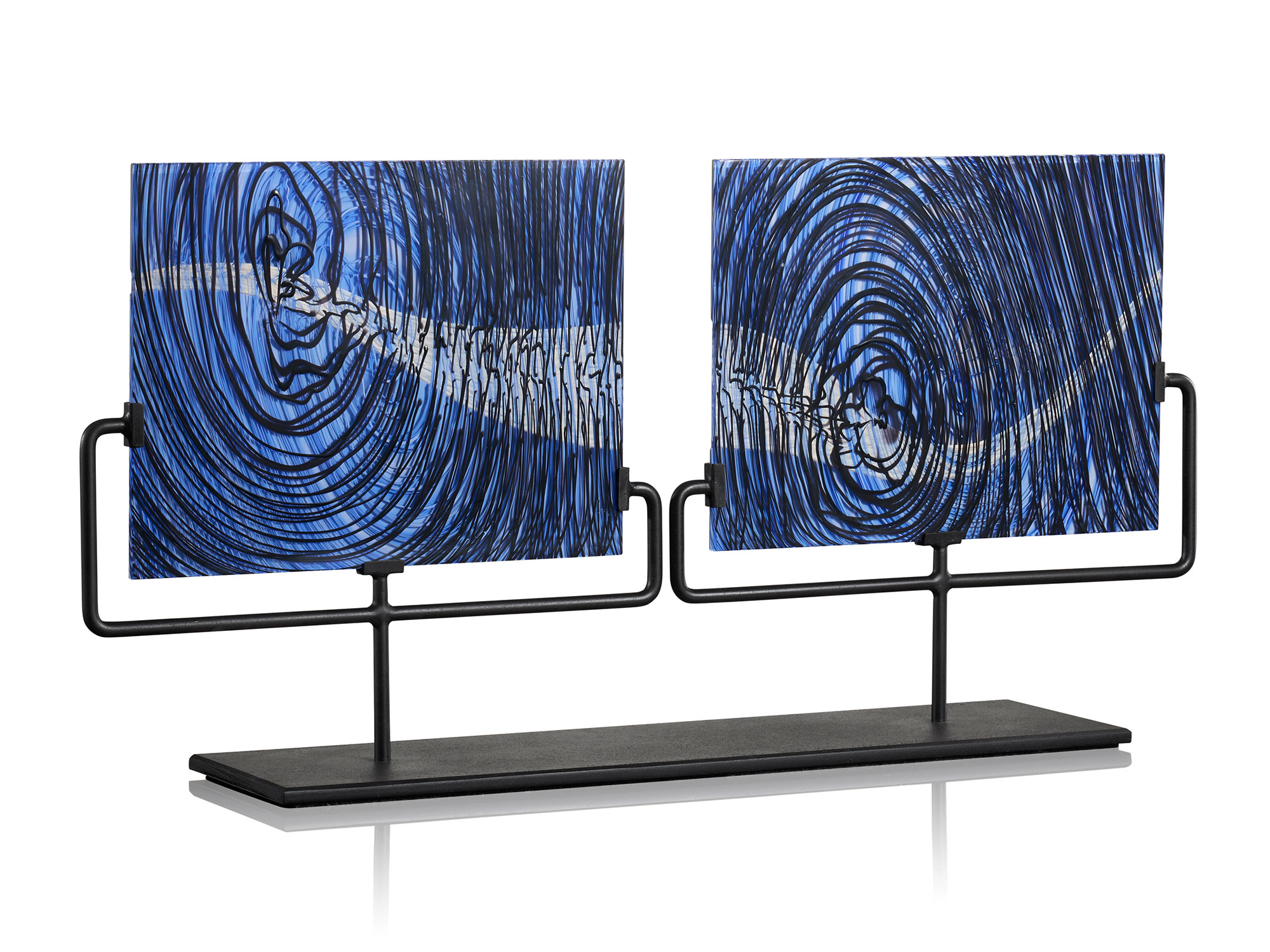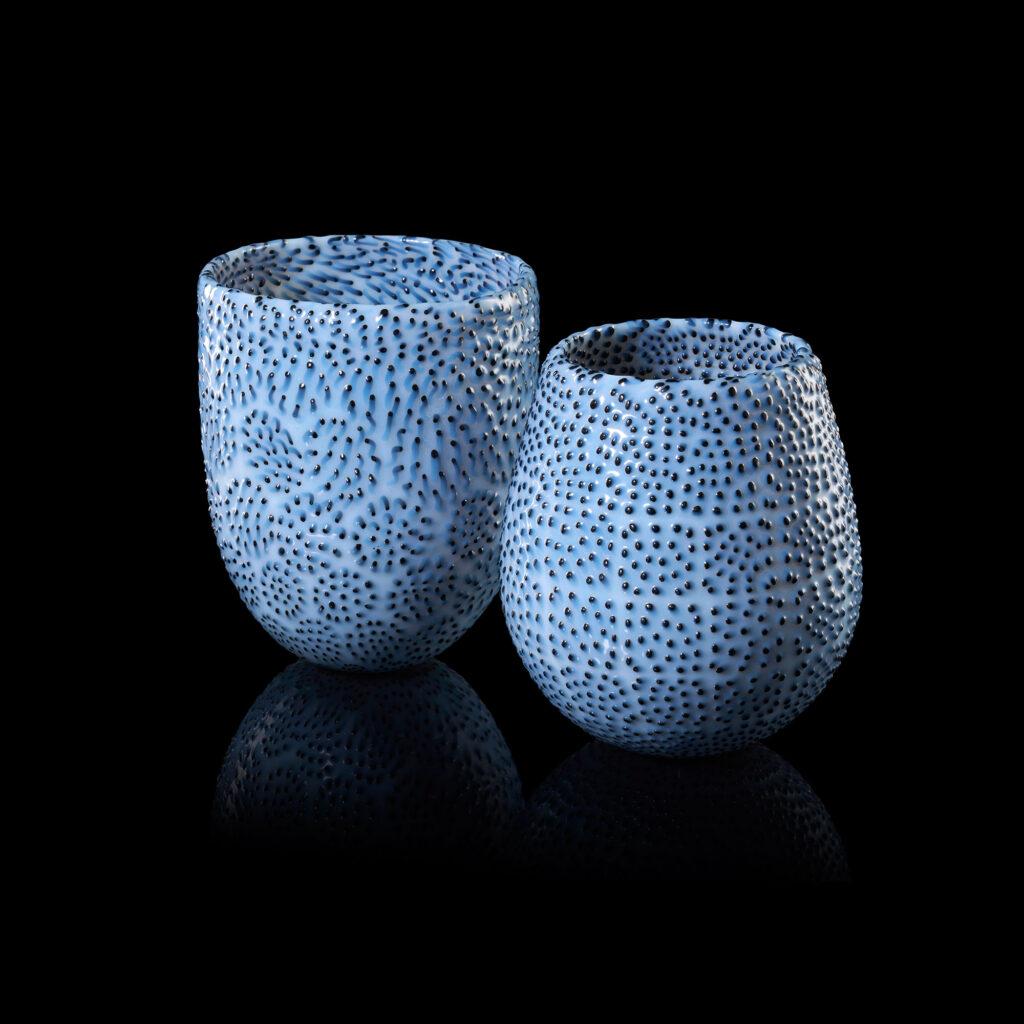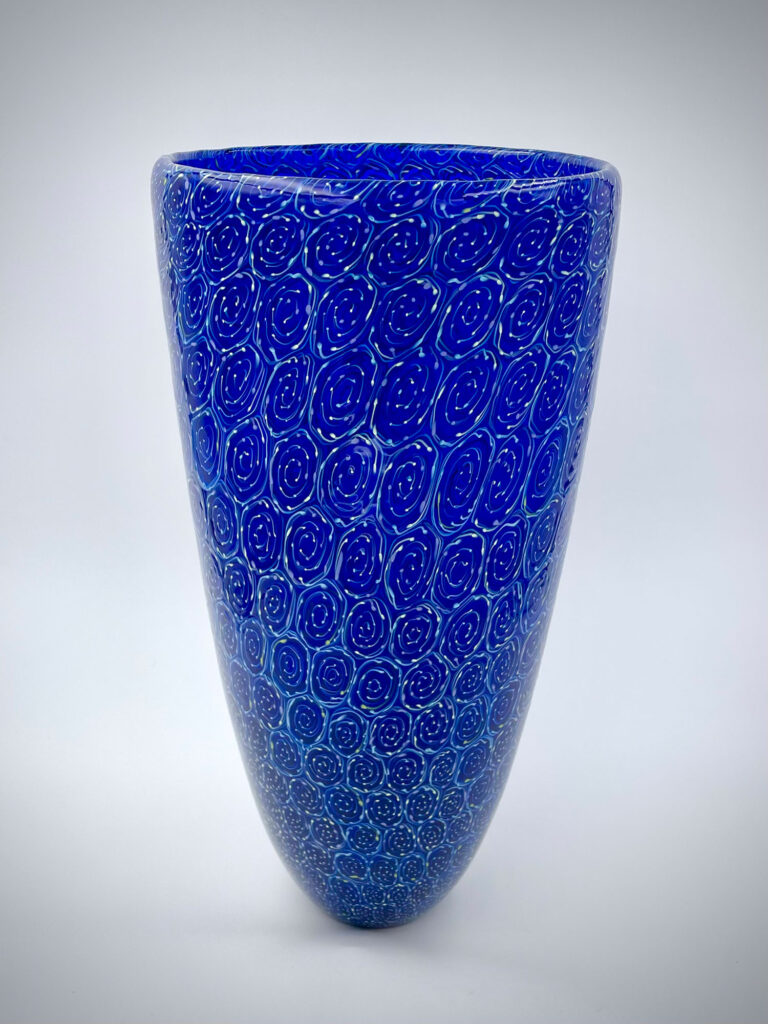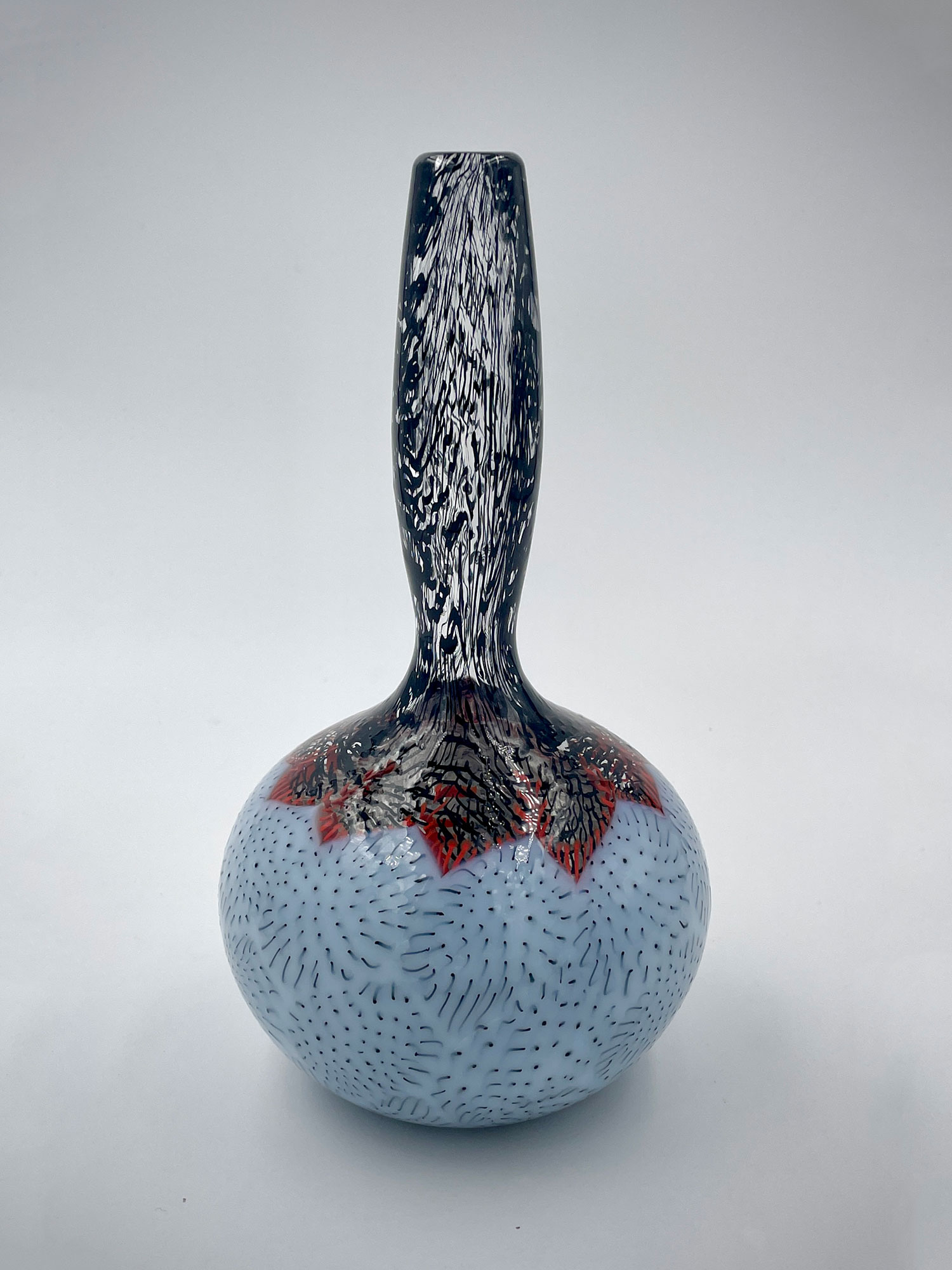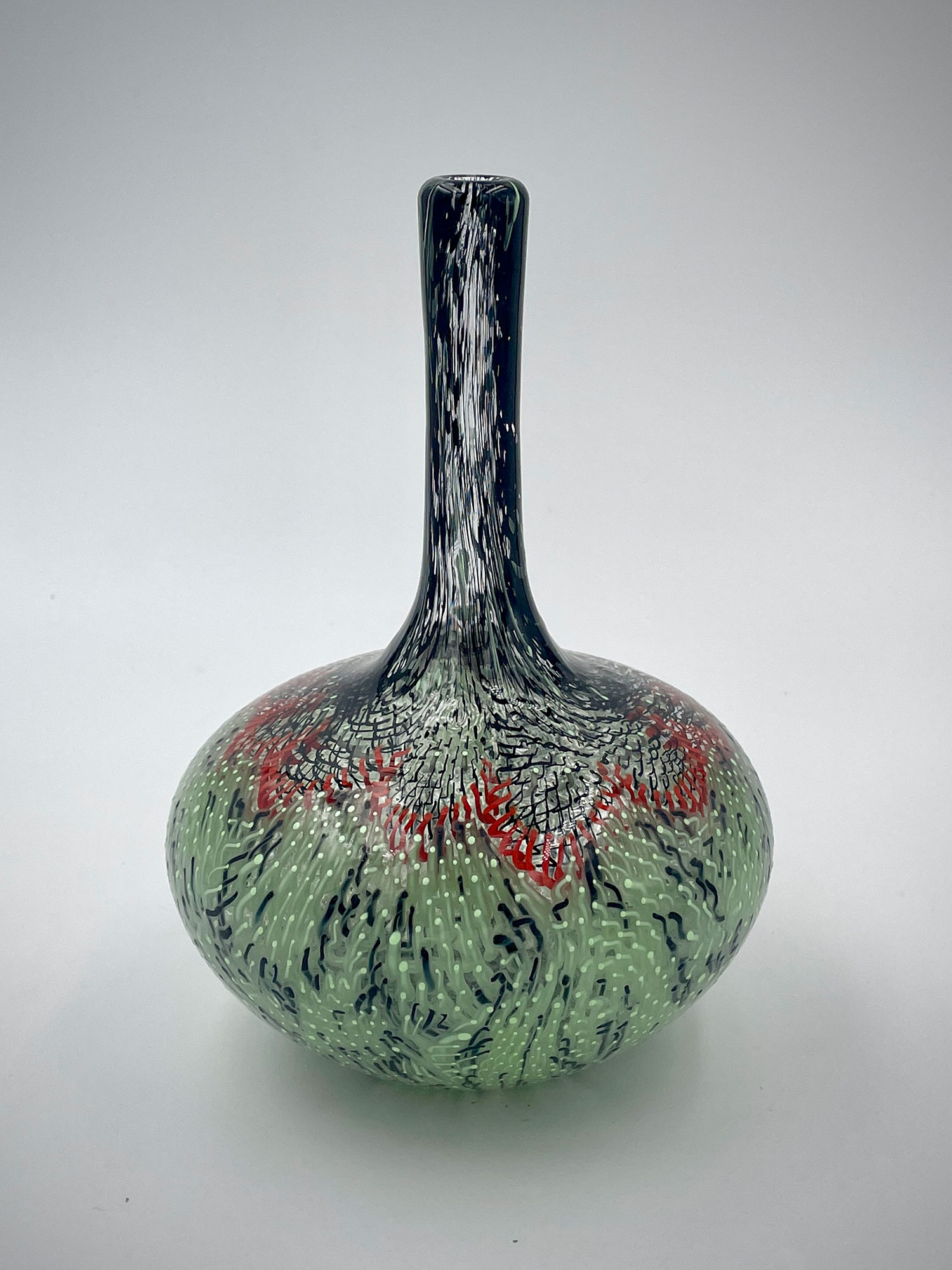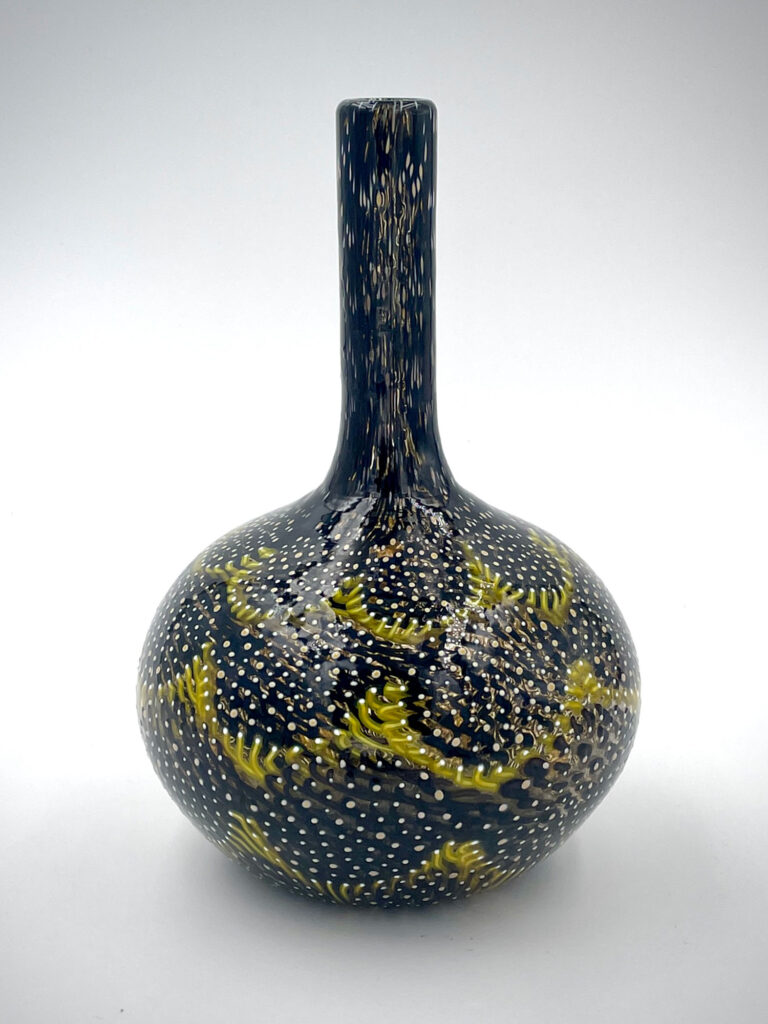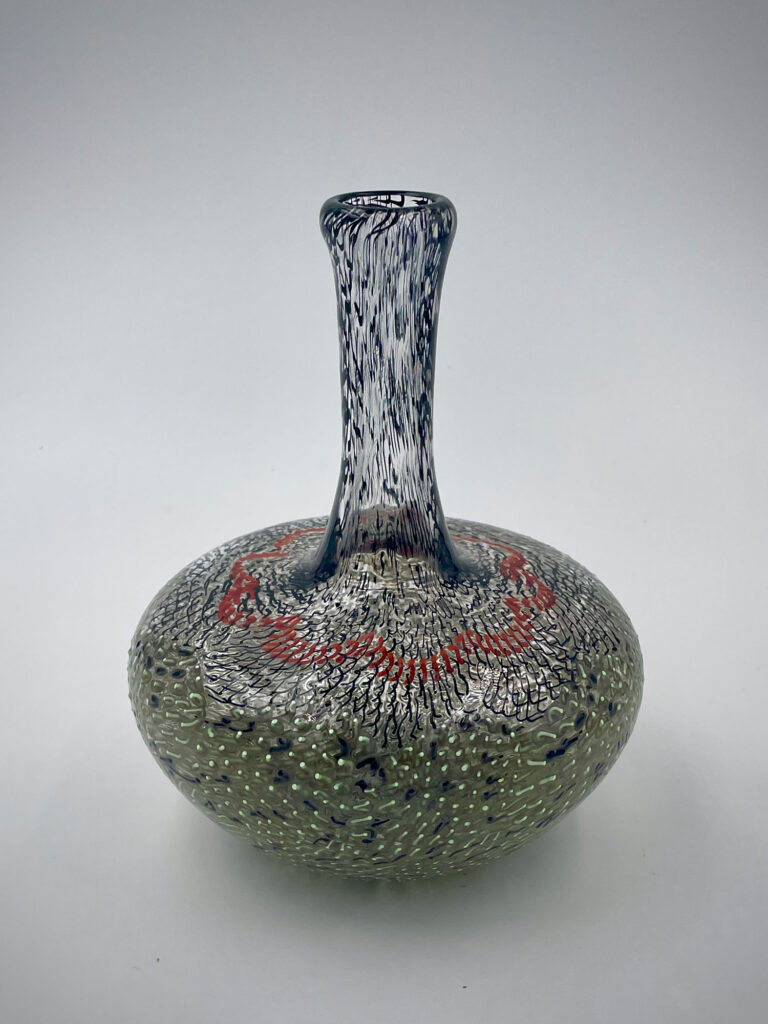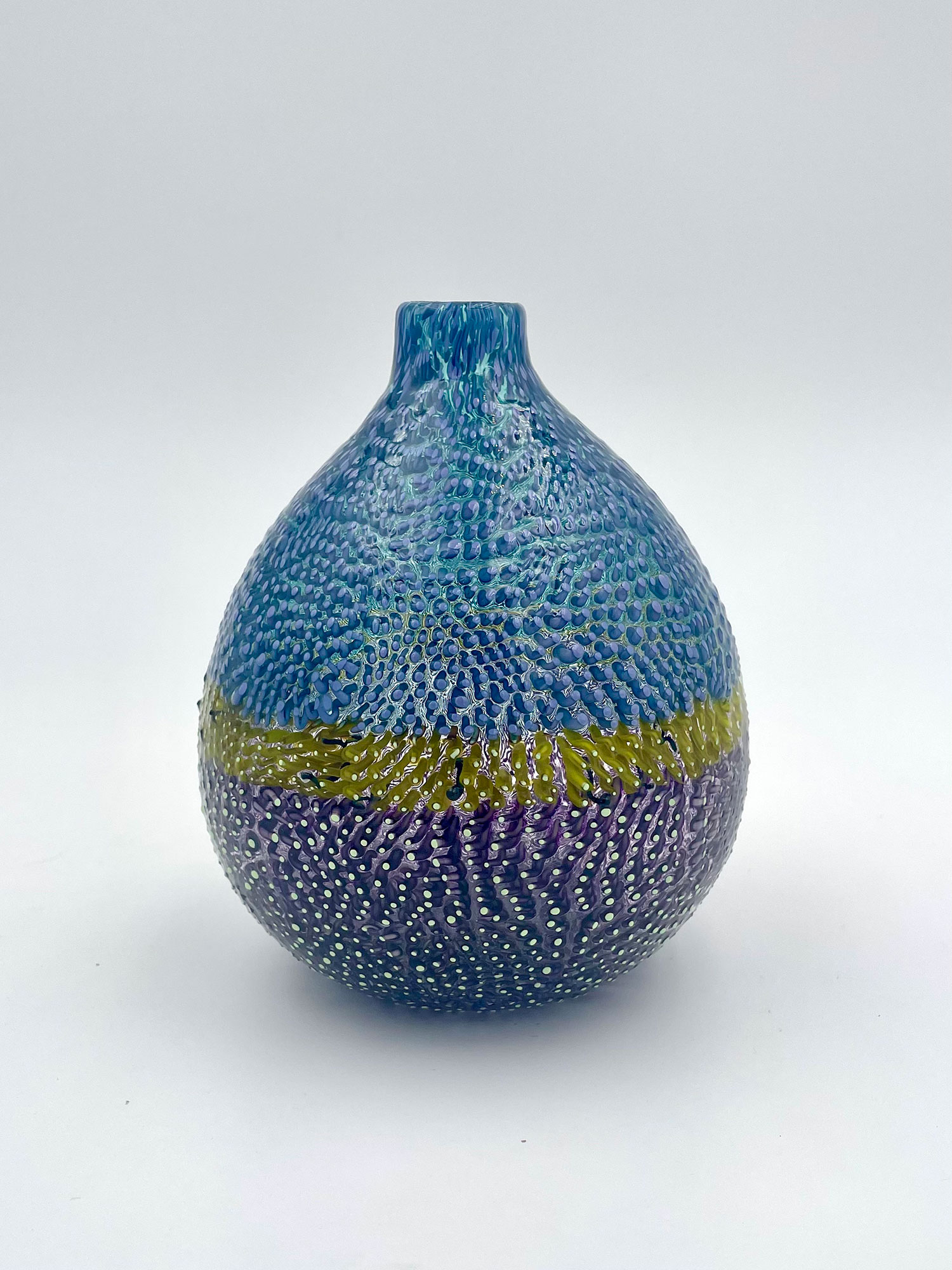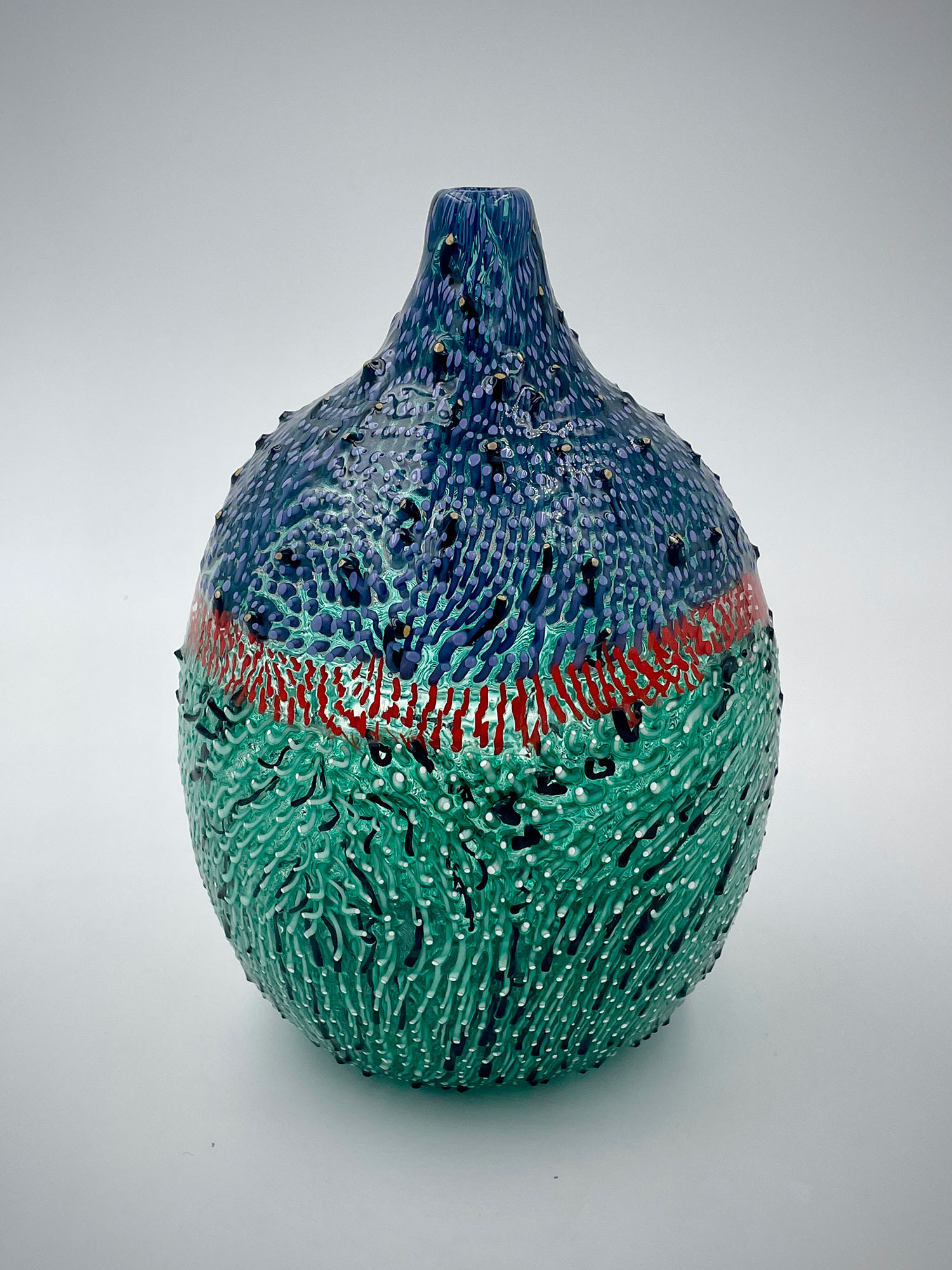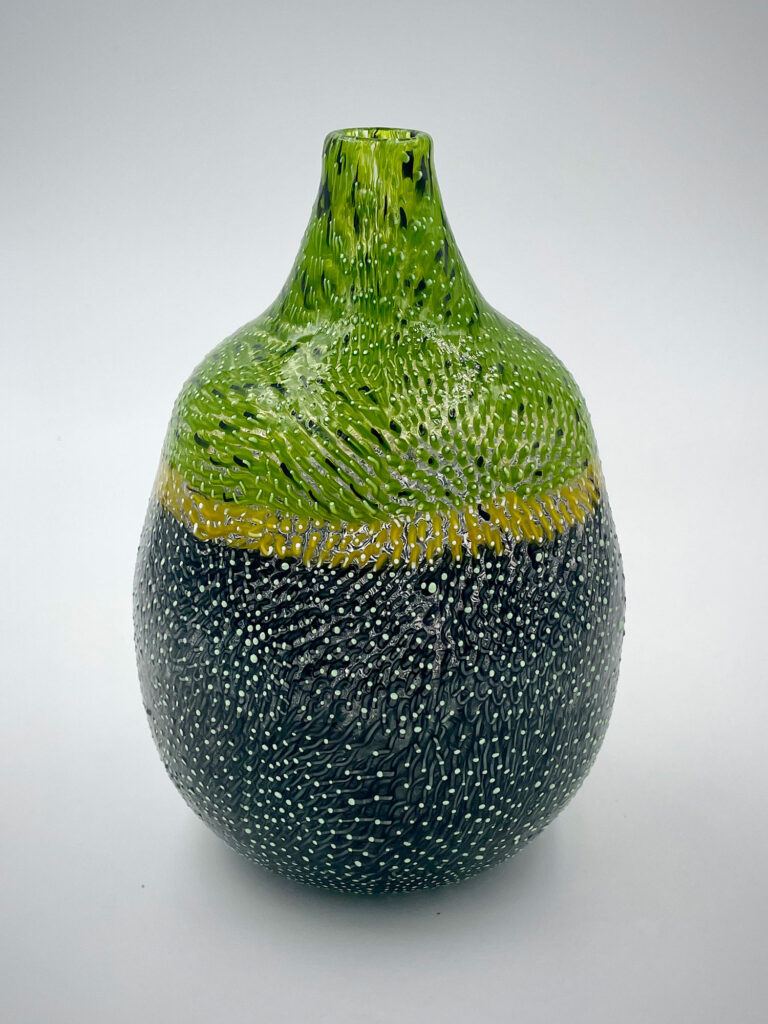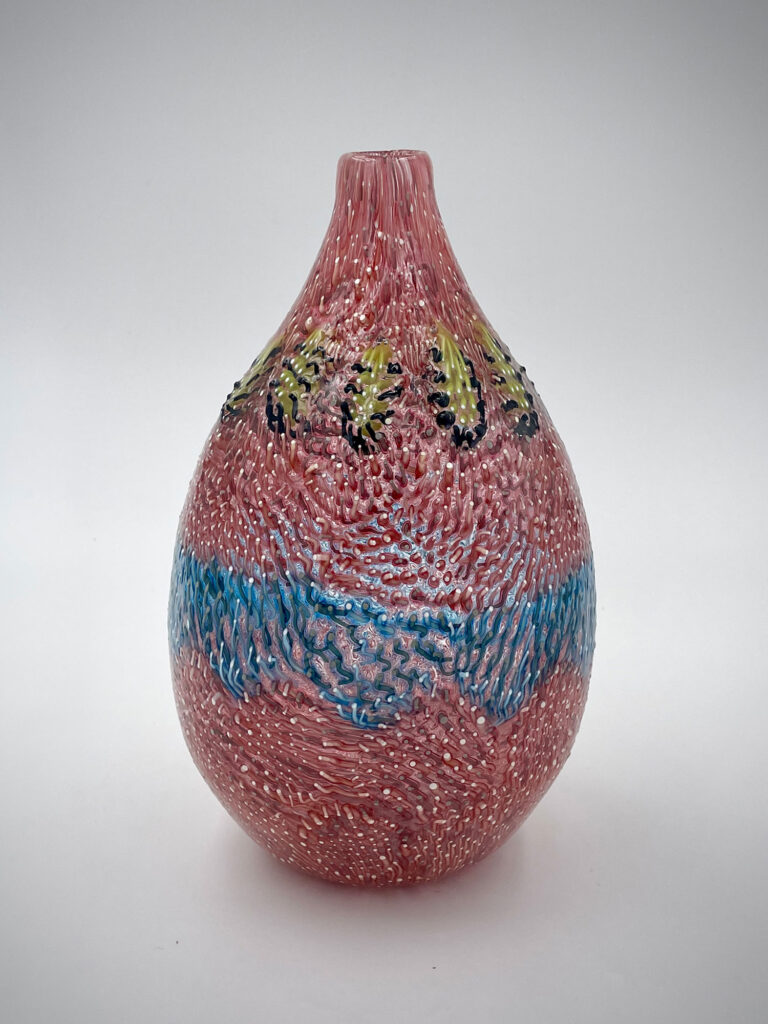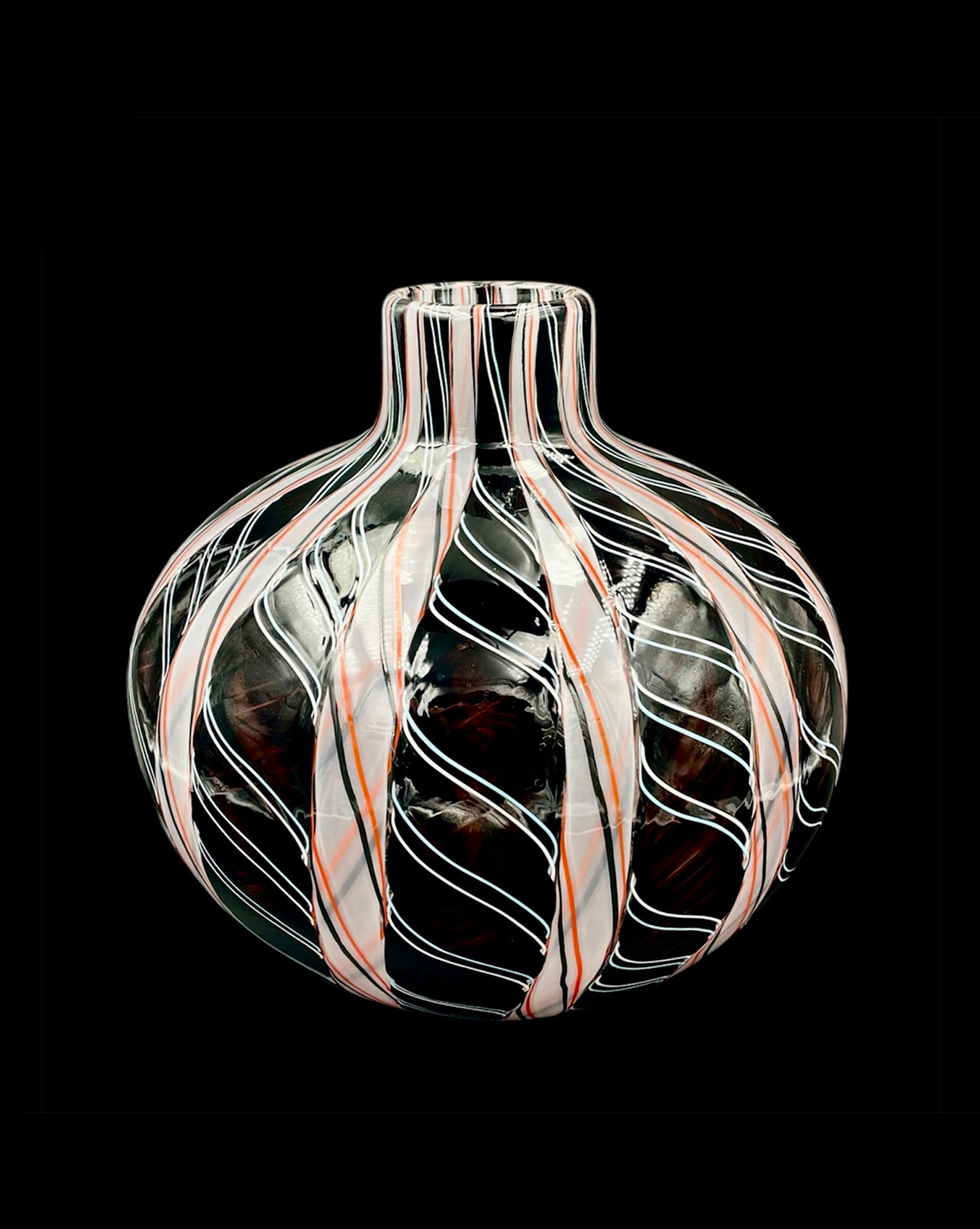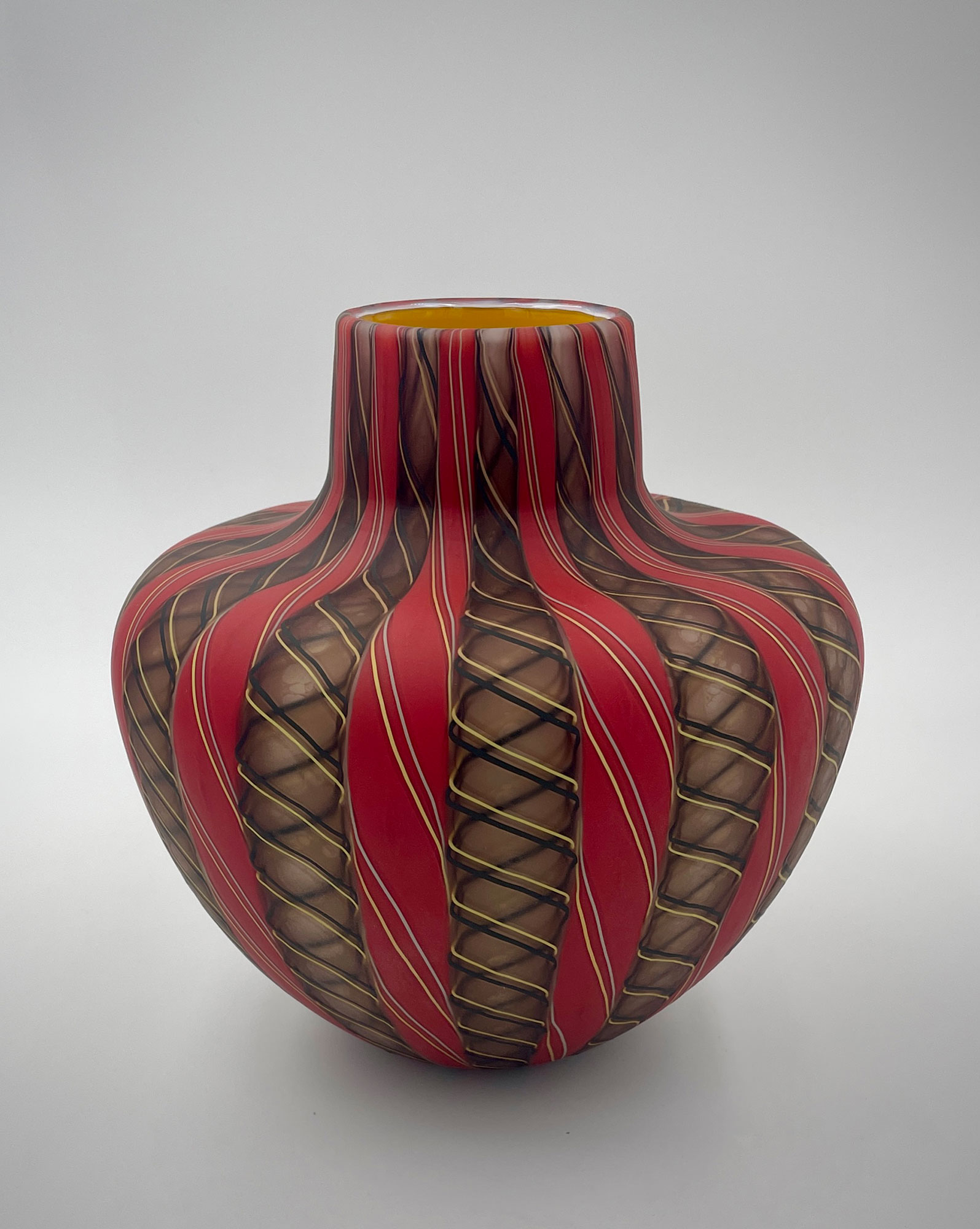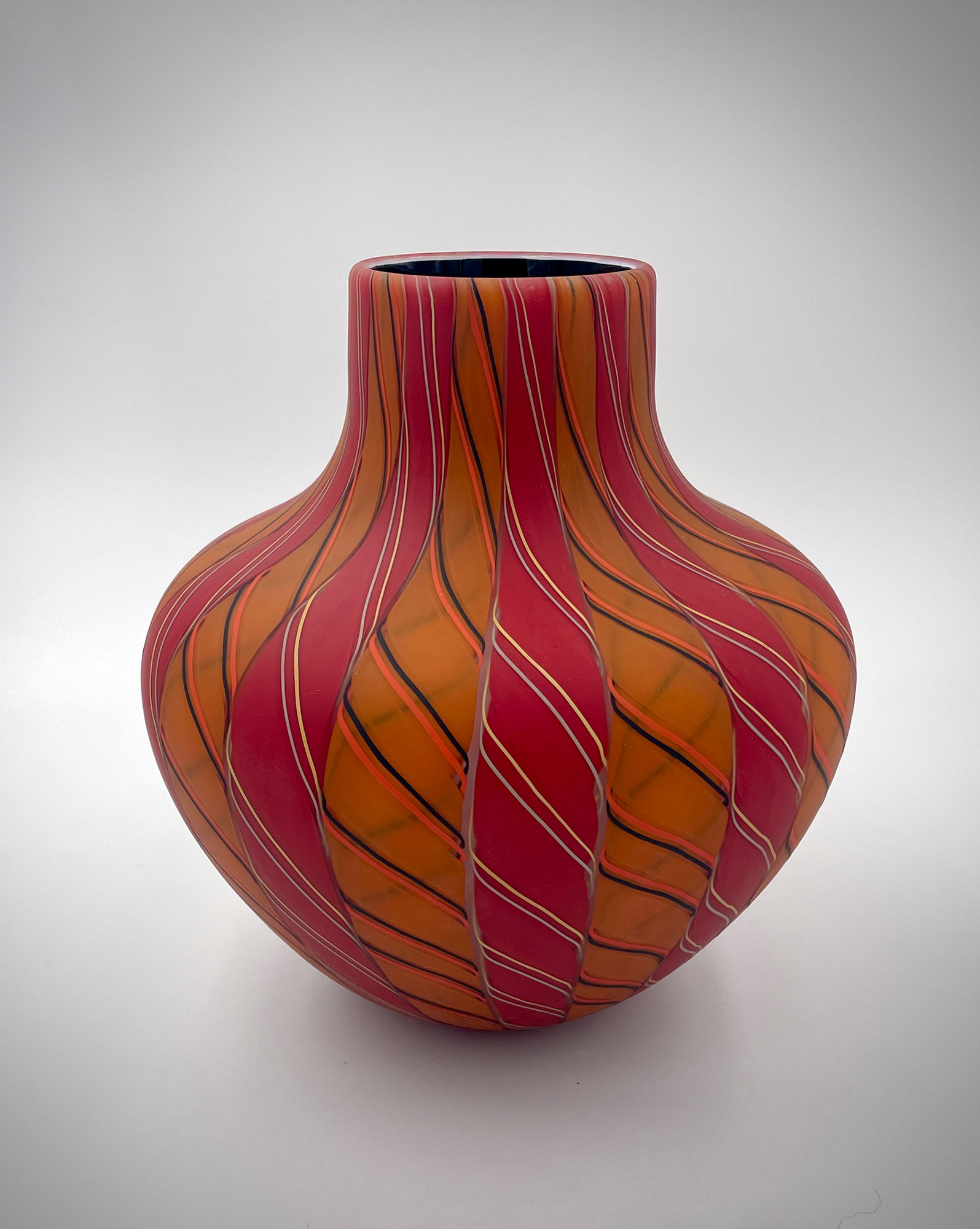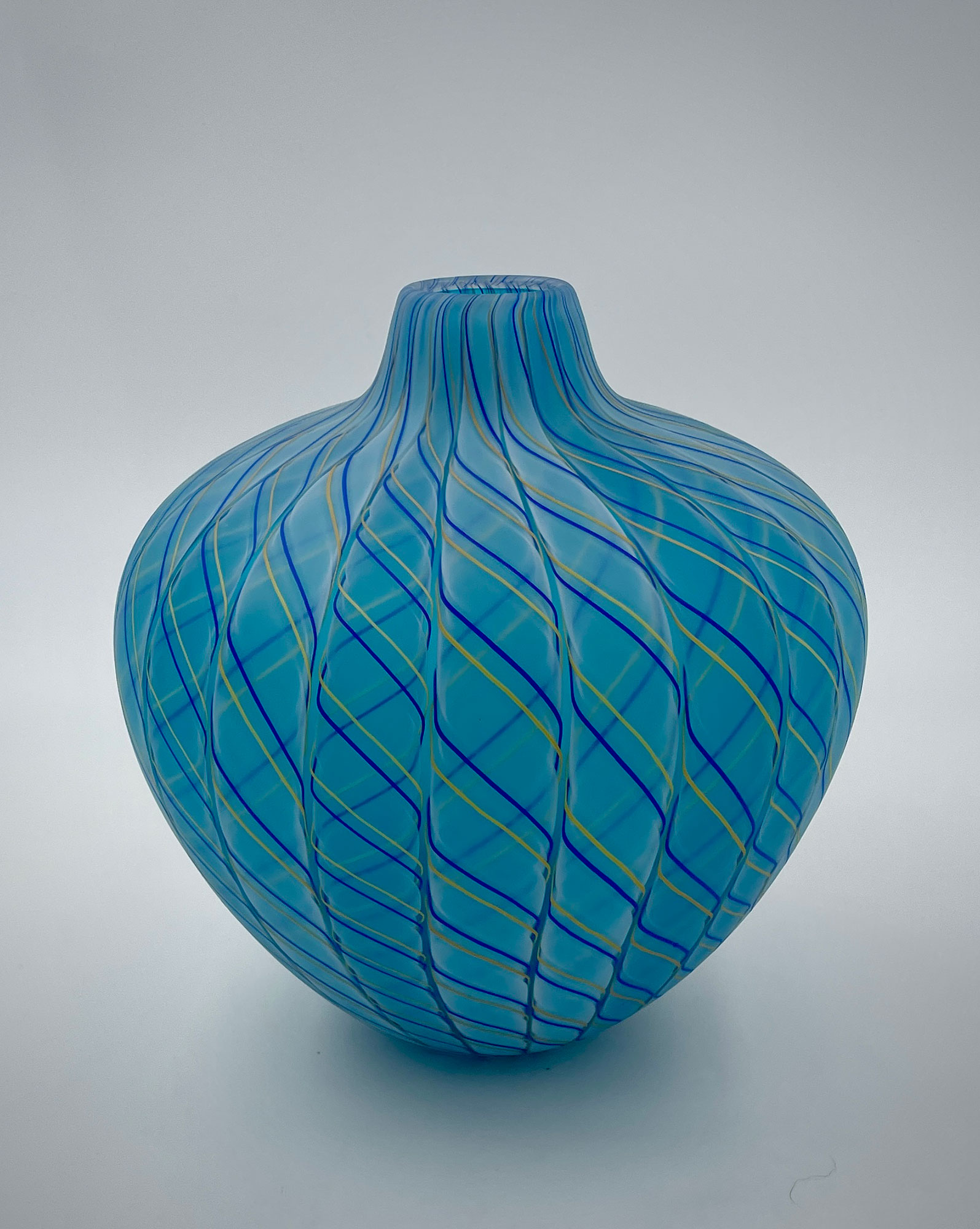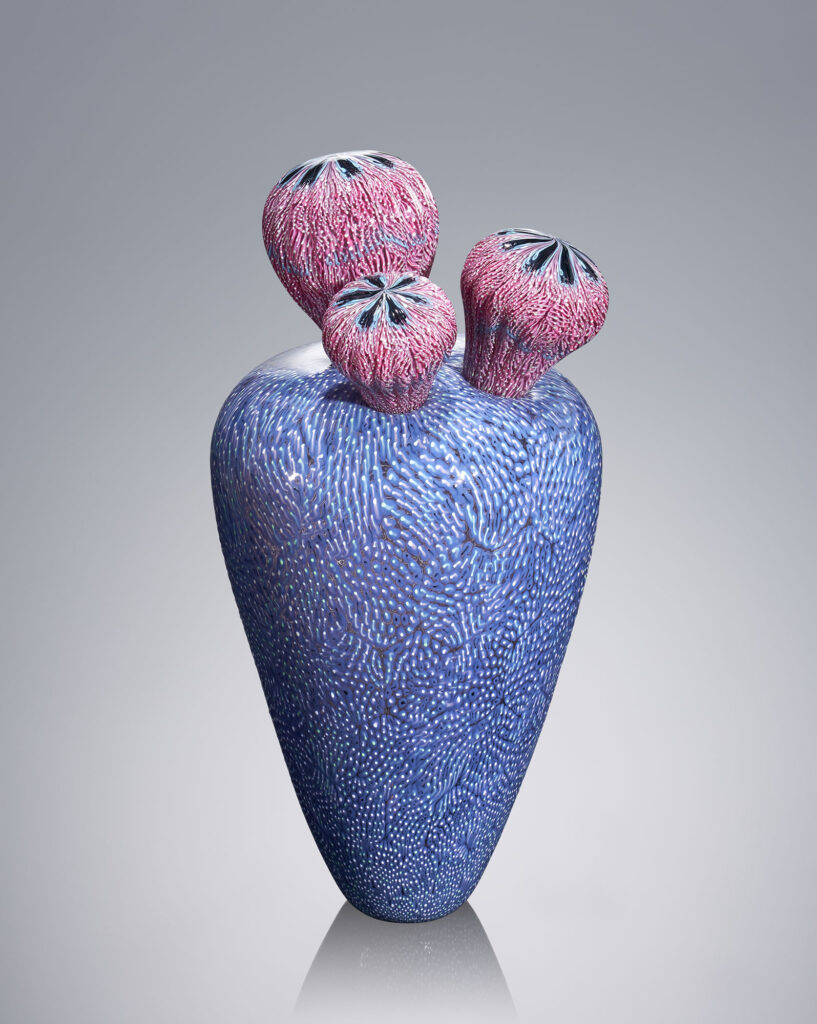JOSH BERNBAUM
Blown Glass
August 24 – October 6, 2024
Saturday, August 24
5-7pm, Opening and Artist Reception
Friday, October 4
5-7pm, Gallery Walk, Meet the Artist
Mitchell • Giddings Fine Arts is honored to represent Josh Bernbaum and offer his work in the gallery for the past 10 years.
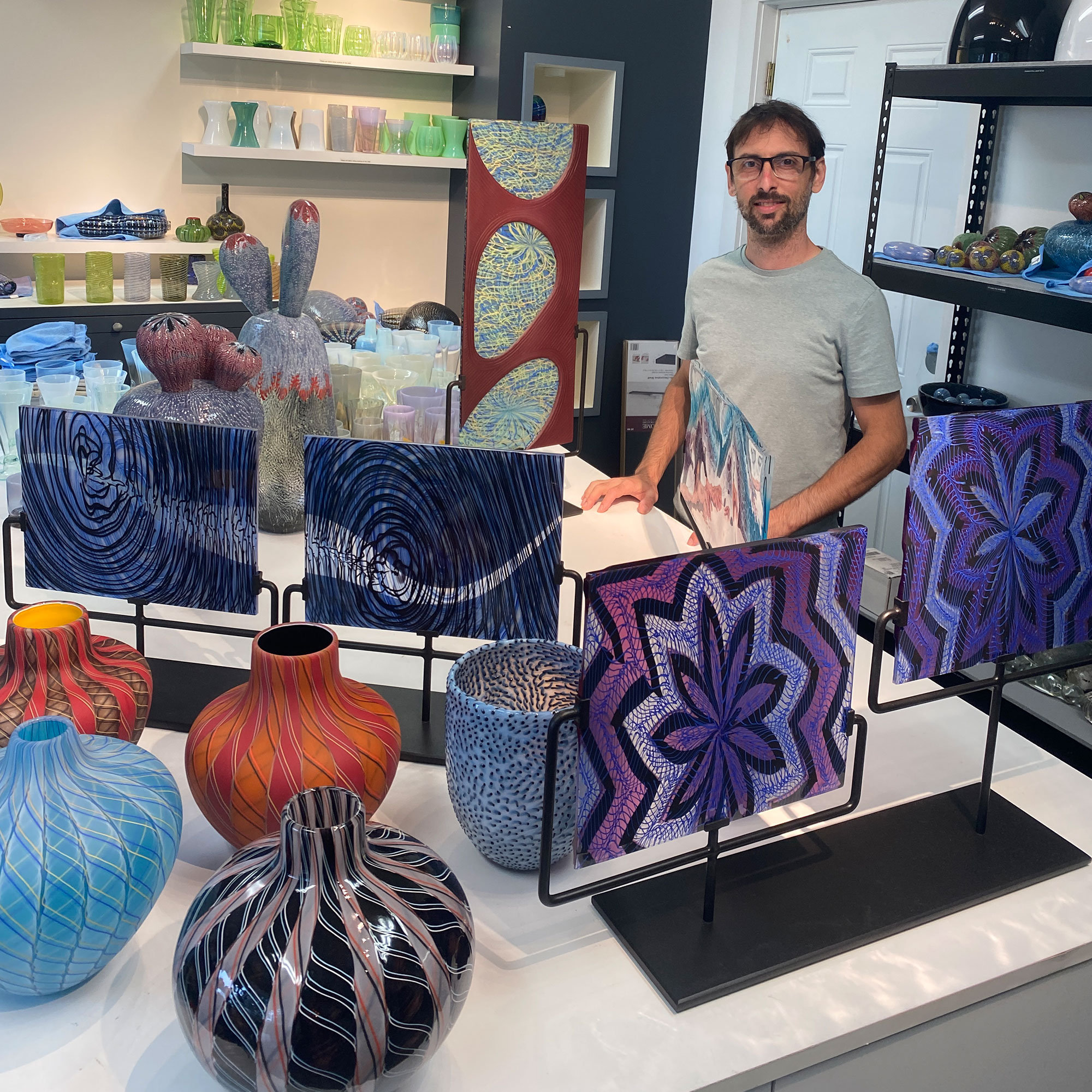
Photo by Petria Mitchell
I am most interested in color, especially color relationships in the works I create in blown glass. Utilizing traditional Italian cane (or striping) techniques in new and personalized ways is the driving force behind most of my current designs. I consider the pieces I make to be documents along the way of a life-long journey of both refining the necessary skills and developing the patience one needs in order to create with this captivating and mesmerizing molten material.
Glass is an unforgiving material that people have worked with for thousands of years, so I’m employing a lot of the same tools and techniques as my contemporaries, but also the glass workers that came before me. Even though these are hundreds-of-years-old processes of working with cane techniques, there are so many looks that have yet to be discovered. I’m still finding new things to do with it, still making pieces no one has ever seen before.
~ Josh Bernbaum
Josh Bernbaum
Parallax, 2024
blown and carved glass with steel stand
19” x 28.25″ x 6”
$5,500
This piece was originally intended to be a full rectangle, displayed horizontally. But at some point along the many-months journey of making this, I thought that a ‘diptych’ type arrangement could be interesting. Especially if the (now two) panels of glass were staggered a bit height-wise while being held in the stand. The two panels are not exactly the same, but similar in design, so I considered that offsetting how they are displayed in space could help highlight the slight differences between the two. I very much like how the extra-deep carving on this piece enhanced the contrast of the zig-zag patterning.
All of these glass ‘panels’ I make start as large blown glass cylinders made at the furnace, containing my designs of coloration and line-work, with one end open and the other end being a flat bottom. After this object has been allowed to slowly cool, I then cut the bottom off so that it is then a cylinder-shape with two open ends, and cut down the length of it in one location to leave a small gap in the cylinder wall. This then gets placed back into an oven and heated up very slowly (to avoid thermal shock) to a temperature at which the glass is malleable again. At that point I proceed to reach into the oven with a full heat-resistant suit on (I look like some kind of a firefighter for NASA) and ‘peel’ apart the now malleable cylinder with the hi-temp gloves I’m wearing. Gravity and heat take care of the rest of making sure the glass then eventually lays flat, after which point I set a program to have this now flat rectangle of glass cool slowly back down to room temperature. When cool again, the finishing-work can then happen such as cleaning up and polishing the edges, and also any carving or etching that I do on these.
Josh Bernbaum
Fraunhofer Lines #9, 2024
blown and carved glass with steel stand
13.5” x 25.5″ x 6”
$5,500
Joseph von Fraunhofer (1787-1826) was a Bavarian orphan who was forced to work in a glass making factory at a young age. After being allowed to leave to focus on his own pursuits, Fraunhofer began experimenting at a secularized Benedictine monastery devoted to optical glassmaking. By age 27, he was the world’s leading designer of lenses, telescopes, and other optical instruments, the high quality of which remained unmatched for decades. In 1814, while experimenting with prisms to find the best types of glass for precision lenses, he made his most significant discovery which came to be named after him–“Fraunhofer Lines.” Not only was he able to see the visible light spectrum through his prisms, but also unusual dark lines arranged amidst the bands of “rainbow” colors. It is as a result of this discovery so long ago that modern astronomers and astrophysicists are able to determine the movement of distant stars, how they were born, and their elemental makeup. Fraunhofer died at age 39, most likely from lead and exposure to other toxic chemicals involved in making the optical quality glasses he had worked on for so many years. His discovery, still important to modern astronomy, and his pursuits in glassmaking inspired me to start a series of my work in which I aim to explore what can be done with both line and the colors of the visible light spectrum. My “Fraunhofer Lines” series aims to be a playful artistic interpretation of this one of many scientifically important uses of the material of glass.
Josh Bernbaum
Vuvuzela Vortex (front left, back right), 2024
blown and carved glass with steel stand
14.5” x 29.5″ x 6”
$5,500
So I think I know what your first question might be: “Vuvuzela” is a horn, or a type of aerophone, usually made now out of plastic, that is commonly used by soccer fans in the stands at stadiums in South Africa. The sound from these can even reach 120 decibels! I titled this work after completing the design, and stumbled on this unusual word that I thought was interesting and related visually to the carving I’d done on the two panels of this piece. The line-work evoked a vortex to me, and geez, I just can’t resist the alliteration of those two V-words together.
Josh Bernbaum
Sublimation, 2024
blown and carved glass with steel stand
29.5” x 12.75″ x 6”
$5,500
Sublimation is a term for the transformation of a substance from a solid directly to a gas state. Dry ice can be one example. This definition really only fits this piece visually, in that I thought the sections where I carved all the way through the brown glass looked like amorphous gas bubbles rising. Plus I just like the excuse to get to use the word ‘sublimation.’
Josh Bernbaum
Granulari (black, white), 2022
blown homemade phosphate glass, ‘murrine’ process
8” x 6.5″ (left), 7.5” x 7″ (right)
$700 each
These are two pieces in a series of works I’ve made over the years exploring what can be achieved not just visually, but actually in a tactile-nature as well that comes from two or more glass colors of different viscosities positioned next to one another. It is the stark contrast I am exploiting in the viscosities of the glass colors I’ve chosen to juxtapose to leave a result in the finished piece which demonstrates how they move and stretch at different rates while the glass object was still hot and being shaped/inflated. I encourage you (please ask gallery staff first) to gently touch the surface of these to feel the result I was after. The title, as are the actual pieces in this series, is an homage to the Italian architect Carlo Scarpa, who was lesser-known for being the artistic director for the celebrated Venini glass house in Murano, Venice, from the late 1930s to the early 1940s. The “Granulari” (or granular) surfaces he conceived, and the often unacknowledged chemists who formulated these glass colors of different viscosities created, have been something I deeply admire since first learning of these historical examples. My contemporary pieces are an homage to Scarpa’s designs but also a way for me to “update” this technique to my own sensibilities and explorations in my role as both designer and maker.
The white glass is a homemade phosphate glass that I have formulated and melted in my furnace, and its lower viscosity contrasts sharply with the higher viscosity of the black glass in these pieces to create the textural surface I was after. Very, very few current-day glass artists or glass blowers make their own glass colors and formulas for use in their work. But I have found this exploration to be one way to get unique looks and qualities in the finished work that can only be achieved through the painstaking processes and unavoidable trial-and-errors of making one’s own glass formulations from scratch. I’m also kind of enjoying learning about the chemistry behind it all.
Josh Bernbaum
Granulari (black, red, blue), 2024
blown glass, ‘murrine’ process
8.5” x 4″
$450
Josh Bernbaum
Granulari (black, red, green), 2024
blown glass, ‘murrine’ process
7” x 4.5″
sold
Josh Bernbaum
Granulari (black, yellow, white), 2024
blown glass, ‘murrine’ process
7” x 4.5″
$450
Josh Bernbaum
Granulari (black, red, grey), 2024
blown glass, ‘murrine’ process
6” x 4.5″
$450
Josh Bernbaum
Granulari (blue, green, purple), 2024
blown glass, ‘murrine’ process
5” x 4″
$450
Josh Bernbaum
Granulari (green, yellow, black), 2024
blown glass, ‘murrine’ process
7” x 4″
$450
Josh Bernbaum
Granulari (red, yellow, blue), 2024
blown glass, ‘murrine’ process
6” x 4.5″
$450
I call this series of work “Basket” based on the influence of my late-friend, mentor, and one time collaborator Jackie Abrams who was a contemporary basket maker (and former exhibiting artist here at Mitchell-Giddings). The forms and coloration are inspired by both her previous work that had an impact on me, and also by Native American pottery of the Southwest U.S. These works are an ongoing exploration of what I can employ in terms of forms I enjoy, color relationships and combinations that are (but sometimes may not be) inspired by “earthy” or natural materials used in basket-making or pottery, and the opacity, transparency, or look from an etched surface that show the range of appearances that this material of glass has the ability to exhibit.
Josh Bernbaum
Sonoran 3, 2021
blown glass, ‘murrine’ process
17.5” x 8.5″”
$4,900
Sonoran is a series exploring of forms and colors that are influenced by the various cacti I saw on a visit to the Arizona desert. The natural sculptural qualities of these plants are quite inspiring, but I see these glass forms as abstractions on what I had observed in the Sonoran Desert.
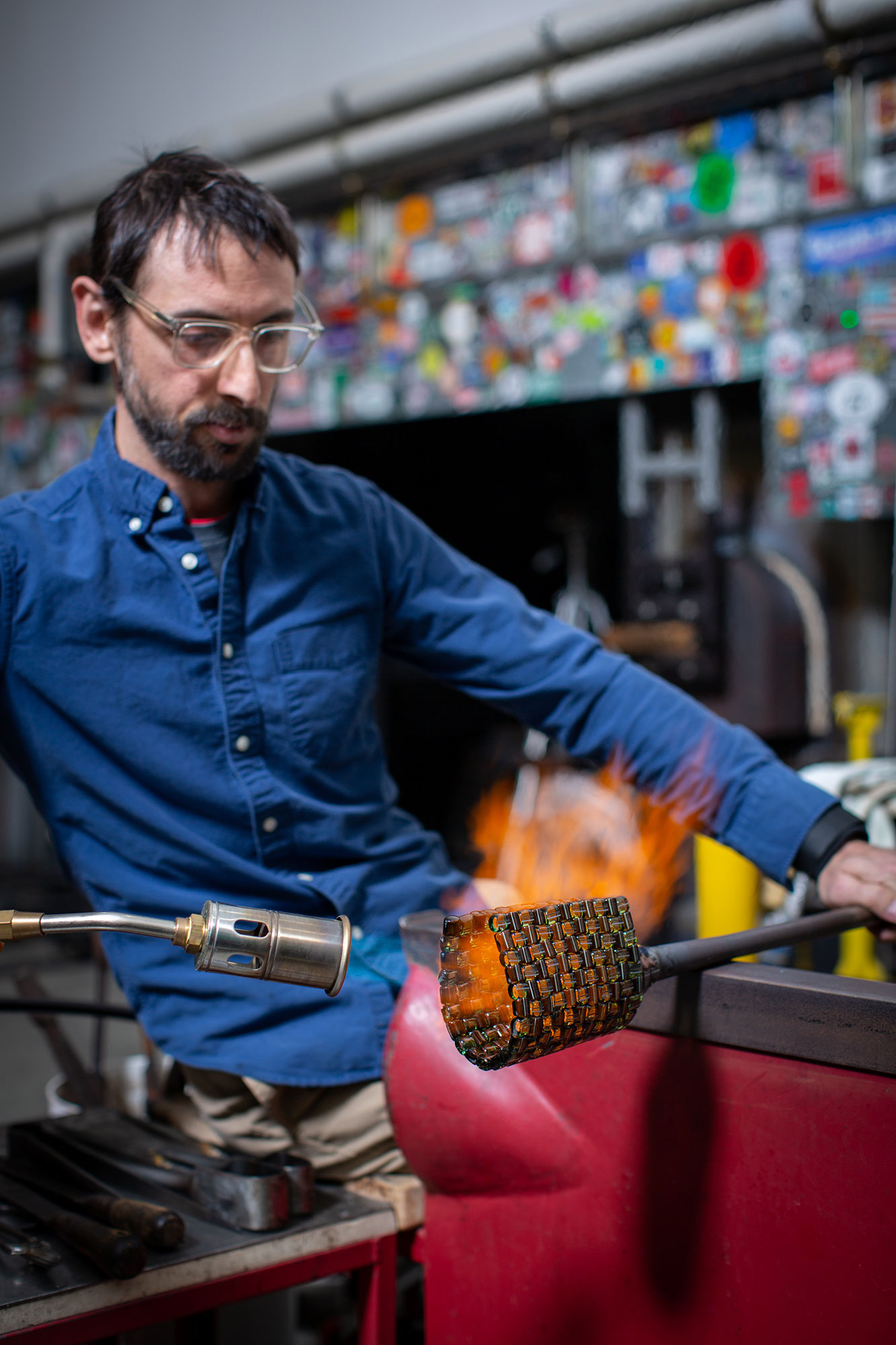
Photo by Lori Pedrick
Excerpt from:
Fire and Light | Glassblower Josh Bernbaum
Yankee Magazine, June 29, 2022
by Annie Graves
Glassblower Josh Bernbaum pushes the boundaries, heating old ways into new.
Time is the thing that breaks boulders into tiny grains of sand. But fire, skill, and imagination can re-form silica sand and accompanying elements—like iron, cobalt, copper—into glass, a miracle of solid form that makes light tangible. “It takes a long time to get proficient with this highly unforgiving material,” Bernbaum says. “There’s no way around it. It just takes years and years and lots of practice.” When he’s imagining what he’d like to create, he likes to refer to the title of an art show he was in years ago: “Thinking in Glass.” All these years of tinkering, experimenting, learning the ways of a medium that he characterizes with emotional qualities.
Represented artists Josh Bernbaum and Jim Giddings exhibited in Mitchell•Giddings Fine Arts from December 3 – January 3 2015. This video recounts the Artist Talk held on December 11, 2015.
Mitchell•Giddings Fine Arts offers contemporary art in a variety of media, featuring emerging and established artists. Visit us on Main Street in Brattleboro, Vermont.

